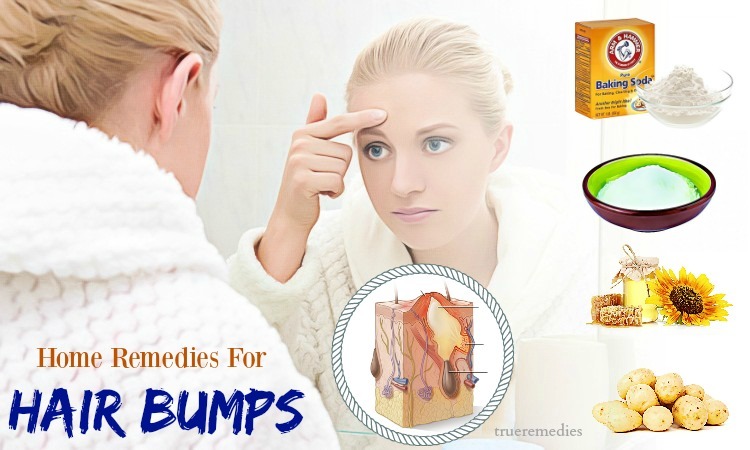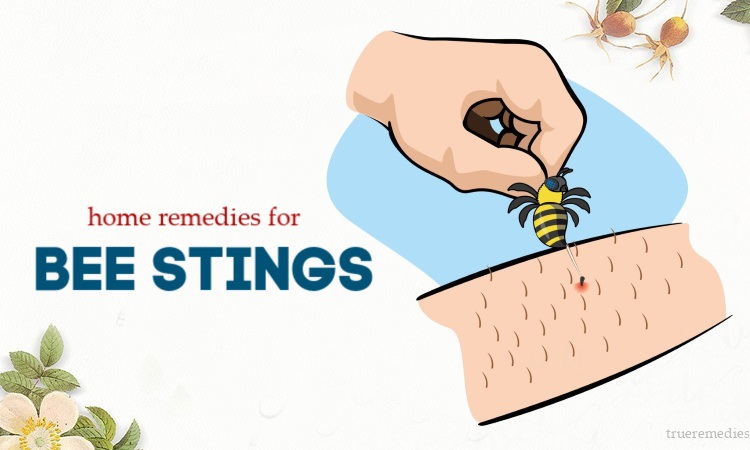Updated: 11/11/2019
Contents
Skin fungus, also known as fungal infections of the skin, is a common skin disorder. Different kinds of skin fungus include jock-itch, athlete’s foot, and ringworm. Although a skin fungus is not really a serious condition, it is something that nobody really wants to experience. Before getting to know the best home remedies for skin fungus on hands, thighs, and legs, you need to acknowledge some fundamental information about this condition. Take a look from TrueRemedies.com!
- 27 Home Remedies For Athlete’s Foot Around & Between Toes
- 26 Tips How To Get Rid Of Jock Itch On Scrotum Fast
What Is A Skin Fungus?
Skin fungus is a highly contagious infection which could be transmitted to another individual on contact. It is crucial to treat the affected area because it might spread on the whole body and leads to other complications. There are different types of skin fungus or skin infections like ringworm, athlete’s foot, jock itch, and others. A skin fungus is an infection of the human skin by a fungus, which is a microorganism often consuming dead material. In humans, the outer layer of skin is made up of dead skin cells that build a barrier to the outside environment. That barrier may maintain its health, but if damaged, it could be prone to some types of infections. There are some kinds of fungi – dermatophytes and yeasts, which could rapidly invade or build itself on the surface of the skin.
What Are Causes Of A Skin Fungus?
Skin fungus loves warm and moist environments. For athlete’s foot, the fungus causing this condition could develop in socks and shoes that are not clean – a common habit of many athletes. Their shoes end up collecting sweat, dirt, and bacteria, thereby causing an infection. Fungal infections could also be caused by microscopic fungi living on the dead tissues of the skin, hair, and toenails. The public areas such as a locker room at gyms, public showers or swimming pools are a common breeding ground for skin fungus.
Regardless of the causes of skin fungus, it is crucial to know that skin fungus is contagious. Just rubbing up against someone may also make you catch skin fungus. It is important to treat the infection so you will not spread it to other people. Skin fungus is also easy to spread on different body parts. Having a skin fungus is not dangerous, but it could be a pain. Hence, treat it before it is out of your control by the help of the following easy home remedies for skin fungus.
TrueRemedies Partner Solutions

Need a Help from the Leading Expert Online, Available 24/7?
They’re all here and ready to answer your questions online or by phone. Keep asking questions until you get the answer you need.
Who Is At Risk Of A Skin Fungus?
You are more at risk of getting a skin fungus if you:
- are taking steroids
- have taken a course of antibiotics
- are obese or overweight
- have a weak immune system caused by HIV/AIDS or cancer
- have had a skin infection in the past
- suffer from high blood sugar levels or uncontrolled diabetes
What Are Symptoms Of A Fungal Infection?
Fungal infection often appears as a rough, cracking and sometimes bleeding skin area. A fungal infection might appear as a circular patch of different sizes. Nonetheless, fungal infections might not always cause round lesions but will lead to darkening or redness of the skin with white peeling flakes and specks. Oftentimes, the affected area is itchy, and sometimes be moist with the musty odor.
For people with a prolonged fungal infection, it will cause a dark discoloration of the skin and usually spreads to the surrounding skin area when the time passes. If you scratch the area, it could result in cross infections of other unaffected body areas.
There is no science-based evidence for the following homemade recipes. The recipes we've focused on are traditional home remedies, so always consult your doctor and check out your health condition regularly.
Top 21 Natural Home Remedies For Skin Fungus On Hands, Thighs and Legs
If you are wondering how to get rid of skin fungus, the answer is very simple. Skin fungus may be the easiest skin problem to cure. Prior to starting any treatment, you have to make sure that your skin is clean and dry. There might be germs and dirt accumulated on the skin that should be eradicated by washing carefully first. Similar to other treatments, home remedies for skin fungus take time, although the prognosis is often good in cases. This article will reveal to you top 21 natural home remedies for skin fungus on hands, thighs and legs which could be done at home without much preparation. Have a look!
1. Yogurt
Fresh, natural yogurt has lactobacillus which is the strong antifungal that may kill of fungi[1]. According to the University of Michigan, consuming one cup of yogurt every day that has beneficial, live cultures known as “friendly bacteria” could help in killing and prevent some fungus infections naturally.
When buying yogurt, choose the one that has “active culture” printed on the label. Purchase the types of yogurt having no flavoring agents or preservatives. The probiotics present in plain yogurt could keep the development of fungi in check by manufacturing lactic acid.
What you have to do is:
Method 1:
- Soak a cotton ball in the plain yogurt, apply it over your affected area
- Wait for 30 minutes and wash it off with warm water, then pat dry.
- Apply the method twice per day until the infection disappears.
Method 2:
- For vaginal infection, dip a tampon in yogurt, insert it in your vaginal area for 2 hours or so.
- Do this method twice per day.
Method 3:
- Add plain yogurt to your daily diet by eating 2-3 cups of yogurt daily till your infection goes away.
2. Apple Cider Vinegar
Apple cider vinegar is one of the strongest natural antibiotics. Many studies have confirmed that this ingredient might kill different microbes. Along with viruses, bacteria, or protozoa, apple cider vinegar might also kill fungi and stop its growth.
Apple cider vinegar has acetic acid with antifungal effects that may eliminate harmful microbes as well as fungi from your body[2]. Some studies back the antimicrobial properties of acetic acids. Besides, apple cider vinegar has pectin which may promote the growth of good gut bacteria. Fungi are opportunistic organisms, which often start to develop the immune system are weakened. However, those friendly bacteria must have something to consume. If they are hungry, they could not grow, and you will be at higher risk of fungal infection. Because of the high content of pectin in apple cider vinegar, this ingredient becomes an important energy source for gut bacteria. To sum up, apple cider vinegar has acetic acid, chlorogenic acid, and pectin, which are responsible for antifungal properties. To use apple cider vinegar for skin fungus treatment, you should follow these methods:
Method 1:
- Dilute 1 part of raw apple cider vinegar with 4 parts of water to dilute the ingredients.
- Apply the mixture over your affected skin and wait for 30 minutes to rinse it off.
- Dry the area carefully with a dryer or towel.
Method 2: Baths
- Add 500ml (about 2 cups) of unfiltered (raw) apple cider vinegar to your warm baths to prevent skin infections and promote the healing process.
- Soak yourself in the solution so that the affected skin areas get covered in the water.
- Get out of the bath after 15 minutes, and rinse your body with clean water
Method 3: Apple cider vinegar tampon
- Dilute ACV and water with a ratio of 1:4.
- Take a vaginal tampon and soak it in the solution for 2-3 minutes
- Insert it into your vagina and remove it after 15 minutes
Clean your vaginal area with diluted apple cider vinegar solution (mentioned in the 1st method)
Read more: 22 Natural Home Remedies For Staph Infection On Face & Scalp
3. Garlic
Garlic is a common folk remedy which is used to treat skin fungus at home. Garlic with its natural anti-fungal and antibacterial properties may be used on the area infected by fungus[3].
Garlic has been used in Chinese medicine for thousands of years. However, garlic may cause blisters as well as other allergic reactions in some individuals. According to Dr. Rosen or the Medical Center in New Jersey showed that studies have discovered that garlic is effective against a variety of fungal infections, including infections caused by candida as well as other common pathogens. To make use of garlic for skin fungus, you should follow the methods below:
Method 1:
- Take 2 garlic cloves to crush and add several drops of olive oil into to create a good paste
- Apply the paste over your infected area and wait for 30 minutes
- Wash your affected areas with tepid water and pat dry your skin thoroughly
- Apply this treatment twice per day until you cure the infection
Method 2:
- Wrap a garlic clove in the gauze, put it in your affected vagina (for vaginal infection) for not over 30 minutes
- Use this method once per day for a few days
Method 3:
- Add several garlic cloves to your daily diet to boost the healing process of fungal infections.
Or, you may take garlic supplements with the consultation of your doctor.
Cautions:
- If you suffer from an infection causing fever, vomiting, shortness of breath, or muscle weakness, you had better seek medical attention
- Allergic reactions might happen in some people upon using garlic fungus. The side effects might include itching, rashes, hives, difficulty breathing, or fever. If you meet this case, eliminate the garlic dressing, consult your doctor.
4. Tea Tree Oil
One of the effective home remedies for skin fungus is tea tree oil because of its antifungal compounds that may kill fungi causing fungal infections[4]. A study found that a dilution of tea tree oil could work as well as 5% benzoyl peroxide in taking control of acne symptoms.
Moreover, tea tree oil also has antiseptic properties that may inhibit the spread of infection to other body parts. But, tea tree oil is just a topical treatment; it should not be taken by mouth. There are no natural sources of tea tree oil available in foods. Due to its toxicity, tea tree oil should not be swallowed.
What you have to do is:
Method 1:
- Mix pure tea tree oil with olive oil / sweet almond oil with a ratio of 1:1.
- Apply the mixture over your infected areas and remove it after 20 minutes or so, then rinse it off with tepid water
- Repeat this routine a few times per day to get good results
Method 2:
- Prepare a mixture of tea tree oil and aloe vera gel with a ratio of 3:1.
- Rub the mixture over your infected area twice per day
Method 3:
- For those with vaginal infection, place several drops of tea tree oil on a tampon and add it to your vaginal area for 2-4 hours.
- Repeat this method twice per day for a few weeks.
Cautions:
- Pregnant women should avoid using home remedies for skin fungus containing tea tree oil.
- Tea tree oil has been reported to cause some allergic reactions that could be severe. It may also cause itching, redness, or blistering. Also, it might aggravate skin conditions like eczema and burns. Using a large amount of tea tree oil on skin may lead to severe side effects.
- Even in small amounts, consuming tea tree oil may potentially lead to severe reactions such as nausea, severe rash, coma, or confusion.
5. Coconut Oil
Coconut oil has tons of uses, but one of the most appreciated uses is skin fungus treatment. Coconut oil has antifungal properties and may be used both topically and internally. You may use coconut oil to replace cooking oil, add it to drinks and smoothies, eat it, or use it onto your skin. Containing 3 different fatty acids which have been proven to inhibit and kill candida, which is capric acid, caprylic acid, and lauric acid – these acids work against fungus, but caprylic acid may be the most effective[5]. You may use coconut oil to deal with vaginal yeast infections, jock itch, ringworm, or athlete’s foot.
In fact, coconut oil does more than warding off unwanted fungi. By using this oil, you will see healthier, stronger hair, skin, and nails. Make sure that you choose non-hydrogenated, extra virgin oil which has not been treated or bleached with chemicals. Here are some ways you may use coconut oil for skin fungus:
Method 1:
- Rub extra-virgin coconut oil on your infected area, let it dry naturally
- Repeat this routine 2-3 times per day till your infection disappears.
Method 2:
- Mix coconut oil and cinnamon oil with a ratio of 1:1.
- Apply it over your infected area and repeat it twice per day to get good results.
Method 3:
- Soak a tampon in organic coconut oil, insert it in the vagina.
- Wait for 2 hours before removing it out of your vaginal area
- Rinse the area with tepid water and repeat this routine once per day for 4-5 days to see good results.
Pages: 1 2










